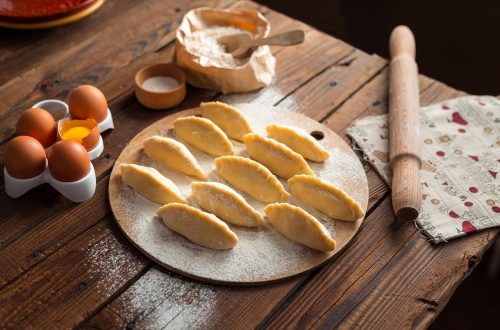Delicious, Healthy Meals That Won’t Break the Bank
The Mediterranean diet has earned its reputation as one of the world’s healthiest eating patterns, backed by decades of research showing its benefits for heart health, brain function, and longevity. But there’s a common misconception that eating Mediterranean means expensive olive oil, imported cheeses, and pricey seafood. The truth is, traditional Mediterranean eating is fundamentally about simple, affordable ingredients that have nourished families for generations.
The key to budget-friendly Mediterranean eating lies in understanding what makes this diet so effective. It’s not about exotic ingredients or restaurant-quality presentations. Instead, it’s about embracing whole foods, seasonal produce, legumes, grains, and healthy fats in their simplest forms. Many of the most authentic Mediterranean meals are actually peasant dishes that were created to feed families economically while maximizing nutrition and flavor.
Building Your Budget Mediterranean Pantry
Creating a Mediterranean-friendly pantry doesn’t require a massive upfront investment. Start with versatile staples that appear in countless recipes. Dried legumes like lentils, chickpeas, and white beans are incredibly affordable protein sources that can stretch for months. A large bag of brown rice, whole wheat pasta, or bulgur wheat provides the foundation for numerous meals at a fraction of the cost of processed foods.
Olive oil might seem expensive initially, but a quality bottle goes far when used properly. You don’t need the most premium extra virgin olive oil for cooking – save that for drizzling and finishing dishes. A mid-range olive oil works perfectly for sautéing vegetables and making dressings. Canned tomatoes, whether whole, diced, or paste, are another essential that costs very little but adds tremendous flavor to soups, stews, and sauces.
Dried herbs and spices transform simple ingredients into flavorful meals. Oregano, basil, thyme, garlic powder, and red pepper flakes are Mediterranean essentials that cost just a few dollars each but last for months. Don’t overlook frozen vegetables either – frozen spinach, artichoke hearts, and mixed vegetables are often more affordable than fresh and maintain their nutritional value.
Breakfast Ideas That Start Your Day Right
Mediterranean breakfasts are naturally budget-friendly because they rely on simple combinations of whole foods. A classic Greek yogurt parfait combines plain yogurt with honey, nuts, and seasonal fruit. Buy large containers of plain yogurt rather than individual flavored cups to save money, then sweeten with a drizzle of honey or mashed banana.
Savory breakfast options work wonderfully too. Scrambled eggs with spinach, tomatoes, and a sprinkle of feta cheese create a protein-rich start to the day. If feta feels too expensive, try making a simple tomato and herb scramble with whatever vegetables you have on hand. Toast made from whole grain bread, topped with mashed avocado, tomato slices, and a sprinkle of oregano, provides healthy fats and fiber.
Overnight oats offer meal prep convenience at minimal cost. Combine rolled oats with yogurt or milk, add chopped nuts, dried fruit, and a touch of honey. Prepare several jars at once for grab-and-go breakfasts throughout the week. For variety, try different combinations like apple cinnamon, berry almond, or banana walnut.

Lunch Solutions for Every Budget
Mediterranean lunches excel at combining leftovers and pantry staples into satisfying meals. A simple chickpea salad starts with canned chickpeas, diced cucumber, tomato, red onion, and parsley, dressed with lemon juice and olive oil. Add whatever vegetables you have available – bell peppers, olives, or carrots all work beautifully. This salad improves with time and makes excellent meal prep.
Lentil soup represents the epitome of budget Mediterranean cooking. Sauté onions, carrots, and celery in olive oil, add dried lentils, canned tomatoes, and broth. Season with bay leaves, oregano, and a splash of vinegar. This hearty soup costs just a few dollars to make but provides multiple servings of complete protein and fiber.
Grain bowls offer endless customization possibilities. Start with cooked bulgur, brown rice, or quinoa, then add roasted vegetables, a protein source like beans or hard-boiled eggs, and a simple dressing. Roast whatever vegetables are on sale or in season – zucchini, eggplant, bell peppers, and onions all work well and often cost less than pre-packaged salad mixes.
Dinner Mains That Satisfy
Mediterranean dinners don’t require expensive cuts of meat or fancy seafood. Pasta with white beans and vegetables creates a complete protein while stretching your budget. Cook whole wheat pasta according to package directions, then toss with sautéed garlic, canned white beans, spinach or other greens, and a splash of pasta water to create a light sauce. Finish with grated Parmesan if your budget allows.
Baked fish doesn’t have to be expensive when you choose affordable varieties like tilapia, cod, or whatever’s on sale. Season simply with lemon, herbs, and olive oil, then bake alongside vegetables like zucchini, tomatoes, and onions. The vegetables cook in the same pan, creating a complete meal with minimal cleanup.
Vegetable-forward meals often prove the most economical. Ratatouille uses inexpensive summer vegetables like eggplant, zucchini, tomatoes, and peppers, slowly cooked with herbs until tender and flavorful. Serve over rice or with crusty bread for a filling meal that costs very little to prepare.
Frittatas transform simple ingredients into elegant dinners. Beat eggs with a splash of milk, then pour over sautéed vegetables in an oven-safe pan. Add a small amount of cheese if desired, then finish in the oven. This technique works with any vegetables you have on hand and provides protein-rich leftovers for the next day.
Smart Shopping Strategies
Shopping strategically makes Mediterranean eating even more affordable. Buy produce in season when prices drop naturally. Summer brings inexpensive tomatoes, zucchini, and eggplant – perfect for Mediterranean preparations. Winter offers affordable citrus, sturdy greens, and root vegetables that work beautifully in soups and stews.
Consider frozen and canned options for out-of-season produce. Frozen artichoke hearts, spinach, and bell peppers often cost less than fresh while maintaining their nutritional value. Canned tomatoes are actually preferable to fresh for most cooked applications and available year-round at consistent prices.
Buy in bulk when possible, especially for pantry staples like grains, legumes, nuts, and olive oil. Many stores offer bulk bins where you can purchase exactly the amount you need, reducing waste and cost. Split large packages with friends or family if storage space is limited.
Meal Planning for Success
Planning Mediterranean meals around sales and seasonal availability maximizes your budget impact. Build your weekly menu after checking store flyers and planning around discounted items. If chicken thighs are on sale, plan several Mediterranean chicken dishes. When zucchini is abundant, incorporate it into multiple meals throughout the week.
Batch cooking saves both time and money. Prepare large quantities of grains, legumes, and roasted vegetables at the beginning of the week, then combine them in different ways for varied meals. Cooked lentils might become soup one day, salad another, and a grain bowl later in the week.
The Mediterranean diet’s emphasis on simple, whole foods makes it naturally budget-friendly. By focusing on seasonal produce, pantry staples, and traditional preparation methods, you can enjoy the health benefits and delicious flavors of Mediterranean eating without straining your finances. Start with a few simple recipes, build your pantry gradually, and discover how satisfying and affordable this time-tested way of eating can be.





